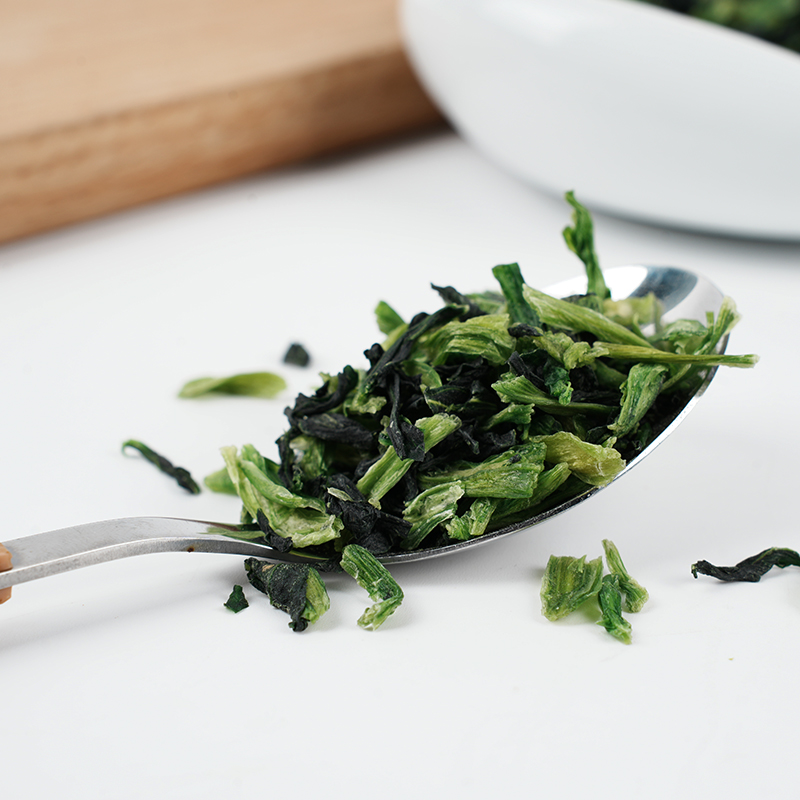Preventing browning or discoloration in dried spring onion is essential to maintain its visual appeal, freshness, and market value. Discoloration can occur due to oxidation, enzymatic reactions, excessive heat, or improper storage. To address this, various processing and storage techniques are employed:
1. Pre-Treatment Methods Before Drying
Blanching
Hot water blanching (85-95°C for 30-60 seconds) or steam blanching is commonly used to inactivate polyphenol oxidase (PPO), an enzyme responsible for enzymatic browning.
This method preserves the green color while reducing microbial load and improving rehydration properties.
Over-blanching can cause texture loss, so precise control of time and temperature is essential.
Sulfite Treatment
Sulfur dioxide (SO₂) or sodium metabisulfite (Na₂S₂O₅) is sometimes used to inhibit enzymatic browning and oxidation.
However, due to food safety concerns and regulations, some markets restrict the use of sulfites, making alternative antioxidant treatments preferable.
Citric Acid or Ascorbic Acid Soaking
Ascorbic acid (Vitamin C) or citric acid solutions act as natural antioxidants, preventing oxidation-related discoloration.
This method is safer than sulfites and commonly used in organic or natural food processing.

2. Controlled Drying Techniques
Low-Temperature Air Drying
Drying at controlled temperatures of 50-70°C helps preserve chlorophyll and prevents excessive browning.
Higher temperatures above 80°C can cause pigment degradation, resulting in a yellowish or brownish appearance.
Freeze-Drying (Lyophilization)
This technique uses sublimation to remove moisture while preserving the natural green color and structure.
Although more expensive, freeze-dried spring onion retains better color, flavor, and nutrients compared to air-dried or oven-dried methods.
Vacuum Drying
Vacuum drying at lower temperatures and reduced oxygen levels minimizes oxidation while preserving the bright green color.
This method is effective but requires specialized equipment.
3. Packaging and Storage Control
Use of Oxygen-Barrier Packaging
Aluminum foil pouches, vacuum-sealed bags, or nitrogen-flushed packaging help prevent oxidation-related discoloration.
Oxygen absorbers are often included in bulk packaging to further extend shelf life.
Light Protection
Opaque, UV-resistant packaging materials prevent light-induced chlorophyll degradation.
Storing dried spring onions in dark environments is also essential to maintain their green color.
Humidity and Temperature Control
Storage in cool (10-25°C), dry conditions with humidity below 50% prevents mold growth and oxidative reactions.
High humidity can cause moisture reabsorption, leading to enzymatic browning.
By combining pre-treatment, controlled drying techniques, and optimal storage conditions, dried spring onions can maintain their natural green color and freshness for an extended period.

 English
English 中文简体
中文简体





 Xinqian Village (Dehydrated Fruit and Vegetable Industrial Park), Duotian Street, Xinghua City, Taizhou City, Jiangsu Province, China
Xinqian Village (Dehydrated Fruit and Vegetable Industrial Park), Duotian Street, Xinghua City, Taizhou City, Jiangsu Province, China +86-13852647168
+86-13852647168
